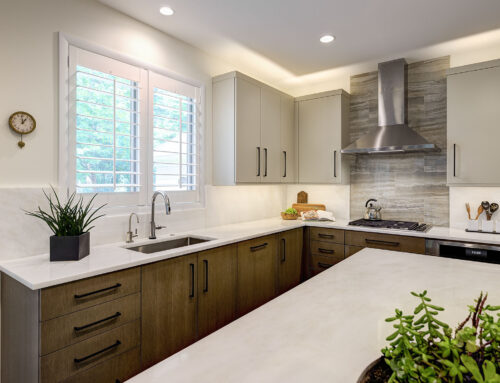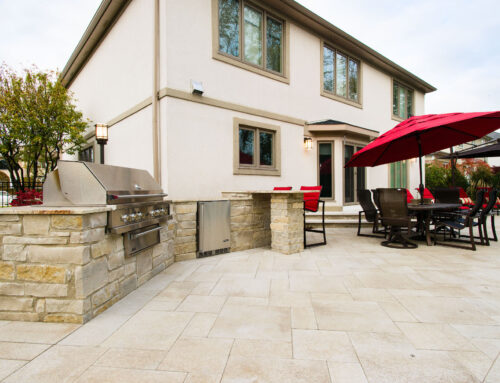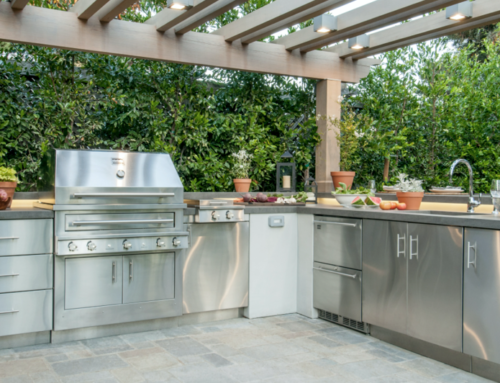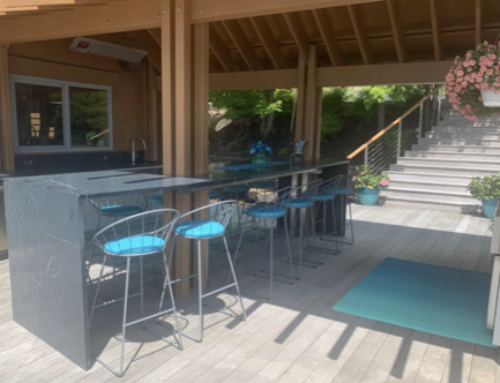Chief Product Designer Russ Faulk’s Tips For Outdoor Kitchen Design
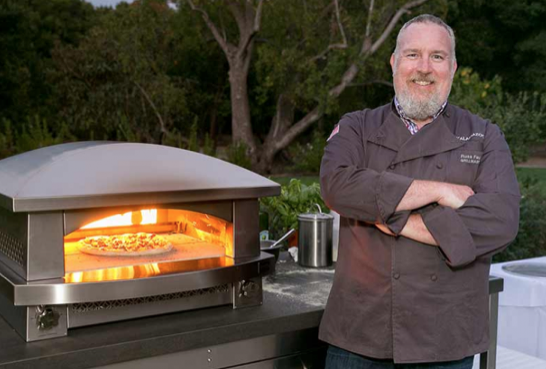
Russ Faulk, Grill Master and Chief Product Designer – Kalamazoo
A well-designed outdoor kitchen is easy to live with. If it feels like it takes an hour to get the kitchen ready for use every time you want to cook, you won’t be cooking very often. Key cooking items need to be able to live outdoors so they are ready to go. In exposed kitchens, our Signature Series of weather-tight cabinetry keeps all of your essentials protected. I also emphasize the use of low-maintenance materials in outdoor kitchen design – choices that can really handle the elements. You don’t want the outdoor kitchen that was supposed to be a luxury to turn into a chore instead.
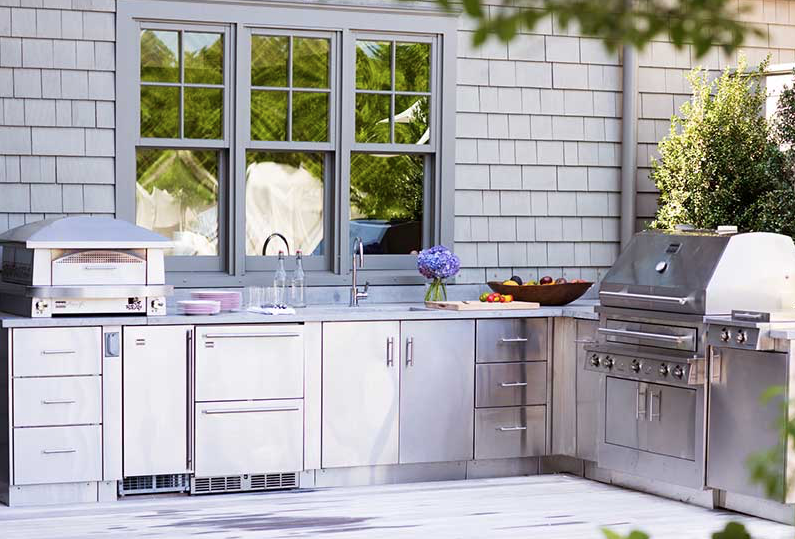
You also want to design the kitchen around the functions of cooking and entertaining. The concepts of functional zones, landing areas and workflow planning are key to designing a cook’s kitchen. Hot zones, cold zones, wet zones and dry zones each require adequate space and careful consideration. Plan for how they will work together effectively for your main cooking and entertaining activities: prep, cooking, serving and cleanup. These are your primary workflows. It is helpful to remember that certain activities involve adjacent outdoor living spaces, and that people who are not cooking will still interact with the kitchen. A child coming to grab a cold lemonade from the outdoor refrigerator is a good example. It is a great idea to locate a beverage fridge near the edge of the outdoor kitchen so that your family and guests do not have to pass by a hot grill or heavy cooking activity to reach for a refreshment. If you dedicate enough space for each functional zone, you walk through each workflow, and you remember to leave landing areas (open places to set things down) at each key piece of equipment, you’re almost guaranteed to design a usable space.
My top tips for outdoor kitchen design are:
[su_list icon=”icon: circle” icon_color=”#5d9732″]
- Complement the architecture of the home and make sure the outdoor kitchen does not look like an afterthought.
- You can never have too much countertop space. Counter-height rolling kitchen carts are a great way to expand counter space on demand.
- You really do need a sink.
- Plan for effective task lighting and ample ambient lighting. Keep those on separate controls.
- Choose the grill you know you are going to love for years to come. It is the heart of the outdoor kitchen, and it is not easy to swap out one built-in grill for another.
[/su_list]

